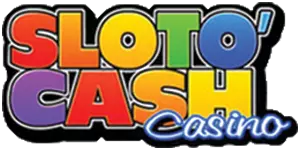Blackjack Odds & Probabilities
Odds and Probabilities – Can Players Outsmart Casinos?
Blackjack is a skill-based card game, which makes it extremely attractive to those who know how to make the optimal move on every hand. Playing with the correct strategy allows you to reduce the house edge and improve your odds of winning in the long term. However, optimal play requires extensive knowledge of the classic casino game and how each card can change the outcome of a betting round.
Nowadays, thanks to the work of countless blackjack aficionados, mathematicians, and casino experts who have dissected the game, useful information is readily available in numerous books and on the web. To help you understand blackjack gameplay better, we have provided detailed information on blackjack odds and probabilities, covering everything you need to know to make more informed decisions while playing the game of 21.
-
 Sign Up Bonus
Sign Up Bonus
Up to $3500
350% Bonus!9.7 -
 Sign Up Bonus
Sign Up Bonus
Up to $500
400% Bonus!9.4 -
 Sign Up Bonus
Sign Up Bonus
Up to $2000
200% Bonus!9.3
Blackjack Odds and Probabilities
The odds of a particular casino game are usually expressed as a ratio between the number of times a given event occurs and the number of times it does not occur. For example, the odds of drawing the Ace of Hearts in single-deck blackjack are 1/51, as there is only one Ace of Hearts in a standard deck of 52 playing cards. Usually, odds are presented in reverse. In other words, the first number shows the chances of losing, and the second number shows the chances of winning. This means that the odds of drawing the Ace of Hearts in single-deck blackjack are 51/1.
If you are a casino fan, you most likely have a basic notion of what the terms “true odds” and “casino odds” mean. True odds are the actual odds of winning a bet. However, casinos never pay according to the true odds, which is why the saying “the house never loses” exists. The casino odds represent the payout for $1 wagered.
Many people use odds and probabilities as synonyms, but the two terms denote different things. Probability is the percentage of a given event occurring as opposed to all possible outcomes. Let us take an example to clarify the term. If you want to know the probability of drawing the Ace of Hearts in single-deck blackjack, you have to divide the possible ways of the event happening by all possible outcomes.
Since a standard deck consists of 52 cards and there is only one Ace of Hearts, the probability of drawing the Ace of Hearts is 1 ÷ 52 = 0.019. Then you multiply this number by 100 to express it as a percentage: 0.019 × 100 = 1.92%. Probability is always a number between 0 and 1. If a given event has a probability of 0, it will never occur, and vice versa.
Comparing the Odds: Blackjack Variations
Instead of leaving you to grapple with blackjack odds calculators, we’ve streamlined the process. Check out this comparison of odds and house edges across some of the most popular blackjack variations. This section will arm you with the knowledge to pick your blackjack games wisely.
Here’s how different blackjack versions stack up against each other in terms of odds and house advantage:
| Blackjack Variations Odds Table | ||
|---|---|---|
| Blackjack Variation | Odds | House Edge |
| American/Classic Blackjack | 3:2 | 0.61% |
| European Blackjack | 3:2 | 0.39% |
| Switch Blackjack | 1:1 | 0.58% |
| Face Up 21 | 1:1 | 0.85% |
| Free Bet | 3:2 | 1% |
| Online – Video Blackjack | 1:1 or 3:2 | 0.5% and 2% |
| Online – Live Dealer Blackjack | 3:2 | 0.49% and 0.72% |
Blackjack – A Unique Game Based on Skills
Odds are used to determine the players’ chances of winning against their chances of losing a particular hand by taking into account a number of aspects. What players should remember is that even the smallest rule change can make a huge impact on the game. Every adjustment directly influences players’ chances of winning, so it is essential to be familiar with the most beneficial variations in order to boost your chances of success.
By getting acquainted with the odds of the game, players automatically increase the likelihood of making the best move in a given situation. The reason is simple – since they have a general idea of the remaining cards in the deck, they can make decisions based on this valuable information.
In blackjack, the odds shift in favor of the player or the dealer with every card drawn from the deck, and optimal strategy is built around these changes. Blackjack fans should take their time to develop their skills and learn as much as possible about the game if they want to leave the casino as winners. Your playing decisions should not be controlled by instinct but by factors such as the dealer’s up-card, the number of decks in use, and the rules dictating the dealer’s play. In fact, that is the most tangible difference between chance-based and skill-dependent games.
Mastering Tricky Blackjack Hands
In the world of blackjack, some hands leave even seasoned players scratching their heads. How you play these tricky hands can be the difference between victory and defeat. By diving into the odds, we can shed light on how to navigate these challenging situations with more confidence. Here’s a look at some of the most perplexing hands you might face and how to turn the odds in your favor:
- Tough Spot: When You Have 16
A hard 16 is one of the worst hands. Basic strategy suggests hitting against a dealer’s 7 or 8 and surrendering against 9 or 10. Yes, the risk of busting when you hit is high, but it’s a calculated risk that could prevent a dealer win.
- Stuck with 15 Against a Dealer’s 10
Facing a dealer 10 with a 15 is daunting, as the odds narrowly favor the dealer. Hitting gives you a 22% chance of winning, slightly lower than the 23% if you stand. It’s a thin edge, but hitting could still be your best bet.
- The Dicey 12 and Dealer’s 4 Situation
This hand is a close call. With the dealer showing a 4, there’s a 40% chance they’ll bust. Standing means you’ll lose 60% of the time. If you hit, your odds improve slightly, giving you a 58% chance of losing with a 2% chance for a push. According to basic strategy, you should stand in this case.
- Dealing with Low Pairs
Got low pairs? Here’s a quick guide:
- Pair of 4s? Split against a dealer 5 or 6.
- Pair of 5s? Don’t split; instead, consider doubling down if the dealer shows 2-9.
- Pairs of 2s, 3s, or 6s? Split against dealer 2-6, and also split 2s and 3s against a dealer 7. Otherwise, don’t split. If you don’t split, hit 2s, 3s, and 4s, and double with a pair of 5s against dealer 2-9. With 6s against a dealer 7 or higher, hit; against 6 or lower, split.
- When You Have 12 and the Dealer Shows 3
Sitting on a 12 against a dealer’s 3? Hit once. Basic strategy suggests standing after any additional cards. The odds are slightly in your favor with this approach, offering you a slim chance for a win or a push.
Remember, blackjack is a game of probabilities, and arming yourself with knowledge is your best bet for success.
The Effect of Card Removal in Blackjack
As hinted above, every card that leaves the deck provides valuable information about the remaining cards and the player’s odds. Interestingly enough, card-counting systems are based on that knowledge. Decks rich in high-value cards shift the odds in favor of the player; conversely, decks in which low-value cards outnumber high-value ones work in favor of the house.
The removal of a card worth 10 decreases players’ chances of winning by 0.51%. The same goes for the removal of an ace, which reduces the players’ chances of winning by 0.59%. The removal of a nine leads to a 0.15% decrease in the players’ chances of winning. To sum up, the removal of a nine, ten, or ace decreases your chances of winning. On the other hand, the removal of cards valued 2 through 6 works in your favor.
Blackjack Odds & Probabilities of Busting
One of the most important things that players need to understand before playing is their odds of going bust. Since the main objective of the game is to reach 21 without surpassing it, it is essential to know when it is best to avoid hitting. Even though players should follow basic strategy to make the best possible moves, it is also important to be aware of their mathematical chances of losing.
Thus, let’s have a look at the following chart, which illustrates the odds of going bust when players choose to hit. The chart takes into account only the total value of the player’s hand and, based on that, calculates the likelihood of busting. It can be very helpful, as it provides players with valuable information about their chances of losing.
| Blackjack Odds of Busting if Player Chooses to Hit | |
|---|---|
| Player’s Hand | Probability of Busting |
| 21 | 100.00% |
| 20 | 92.00% |
| 19 | 85.00% |
| 18 | 77.00% |
| 17 | 69.00% |
| 16 | 62.00% |
| 15 | 58.00% |
| 14 | 56.00% |
| 13 | 39.00% |
| 12 | 31.00% |
| 11 or less | 0.00% |
Dealer’s Bust Probability
Curious about why the dealer often seems to come out on top at the blackjack table? It all comes down to the odds of them busting, which differ depending on whether the dealer stands or hits soft 17. A deeper understanding of these odds can significantly influence your blackjack strategy, as they offer insights into when the dealer is more likely to bust based on their up-card.
Here’s a concise table showing the likelihood of the dealer busting, which can change depending on house rules:
| Dealer’s Odds Table | ||
|---|---|---|
| Dealer’s Card | Probability – Stand on 17 | Probability – Hit on 17 |
| Ace | 17% | 20% |
| 2 | 35% | 36% |
| 3 | 37% | 38% |
| 4 | 40% | 40% |
| 5 | 42% | 42% |
| 6 | 42% | 44% |
| 7 | 26% | 26% |
| 8 | 24% | 24% |
| 9 | 23% | 23% |
| 10 | 23% | 23% |
Frequency of the First Two Cards
At the beginning of every game, players are dealt two cards that determine the value of their hand. Since a standard pack consists of 52 cards, 13 ranks, and 4 suits, it is possible to predict the odds of receiving a particular combination. Thanks to these findings, players can get a general idea of how often they might form a natural blackjack or a soft hand. They will also better grasp the fundamental principles of blackjack and know the exact percentage of drawing any of the different hand categories.
A natural blackjack—an ace and a ten—occurs 4.8% of the time. It is the most desirable hand and, as such, it shouldn’t be a surprise that it is hard to get. The second-best combination players can receive is a hard-standing hand, as its total value is usually enough to beat the dealer. The following chart provides valuable information about the likelihood of receiving a certain combination.
| First Two-Cards Frequency Chart | |
|---|---|
| Two-Card Combination | Frequency in Percentage |
| Natural blackjack | 4.80% |
| Hard Standing (17-20) | 30.00% |
| Decision Hands (1-16) | 38.70% |
| No Bust | 26.50% |
| Total | 100.00% |
Blackjack House Edge
It is no secret that every casino game, including blackjack, has a built-in advantage; after all, this is why casinos offer such games in the first place. The house edge is a dynamic measurement, as it depends on many factors such as the number of decks and the specific rule set. Blackjack is famous for having a very low house edge—around 1%, which can be reduced even further if players apply strategy correctly. In general, casino games that require skill and knowledge are the ones with the lowest house edge, as their outcomes can be influenced.
Blackjack is one of the most popular casino games, and as such, it shouldn’t be a surprise that it has numerous variations. Every version gives players different chances of achieving the desired win, as some variations offer more favorable rules and odds than others. For instance, the house edge of the popular version Super Fun 21 is 0.94%, whereas in Blackjack Switch it’s only 0.17%.
House Edge of Multi-Deck Blackjack
In blackjack, the number of decks used plays a crucial role, as it directly influences the odds of winning. In the past, the game was mainly played with a single pack of cards, but nowadays it is extremely hard to find such a game. Therefore, players should familiarize themselves with the house edge each variation offers, as it greatly determines their chances of making a profit. The number of decks is also essential for card counters because a game played with eight decks makes it extremely hard to keep track of the cards. It is worth noting that the more decks are used, the higher the house edge becomes. For instance, a blackjack game following standard rules will have a house edge of about 0.42% when played with two decks. However, if the game involves eight decks, the house advantage will increase to about 0.70%.
Conclusion
One of the reasons why blackjack is so wildly popular is that it offers players moderately good chances of winning, as its house edge is less than 1%. Because its odds can be calculated to a large extent, it is possible to determine the likelihood of receiving a certain card combination. Blackjack is a game that requires a good deal of skill, enabling players to influence the outcome of every hand by utilizing a reliable strategy. It is extremely important to know the situations in which it is a good idea to increase the size of your bet, giving you the chance to maximize your winnings.
FAQ: Understanding Blackjack Odds & Probabilities
Odds in blackjack tell you the chance of winning or losing a hand. For example, the odds of getting an Ace of Hearts from a single deck are 1 in 51. Understanding odds helps you better gauge your chances during the game.
Knowing the odds helps you make smarter decisions. For instance, if you’re aware of the odds of busting with a certain hand, you might choose to stand instead of taking another card. It’s all about making smart decisions.
Odds reflect the chances of an event happening to it not happening. Probabilities, on the other hand, indicate the likelihood of an event occurring. Both concepts help you understand your chances of winning or losing a hand.
Yes, blackjack odds change with each card dealt. For example, if high-value cards are drawn, the remaining deck becomes less favorable for the player. This dynamic nature of blackjack is why strategies like card counting can be effective.
Different rules can significantly impact the house edge. For instance, the house edge increases if the dealer hits soft 17. Understanding how these rules affect the odds can help you choose games that offer better chances of winning.


